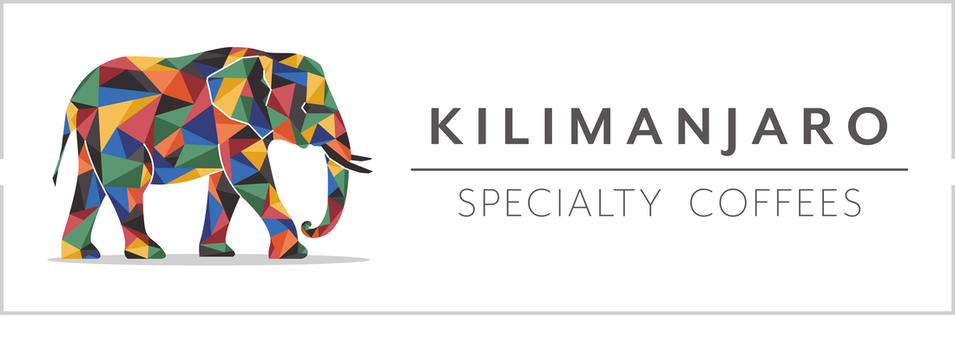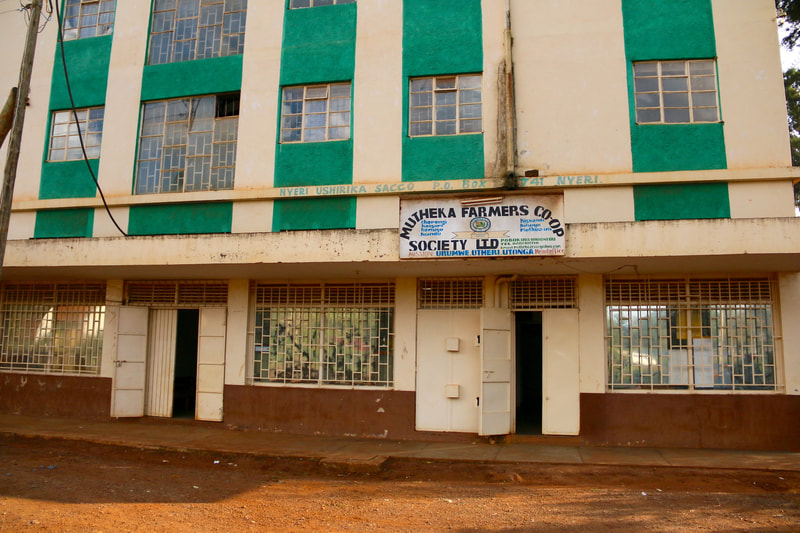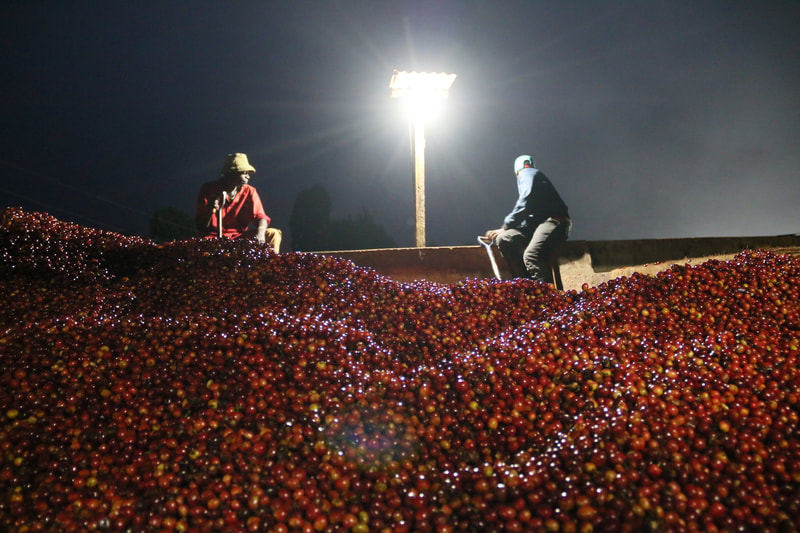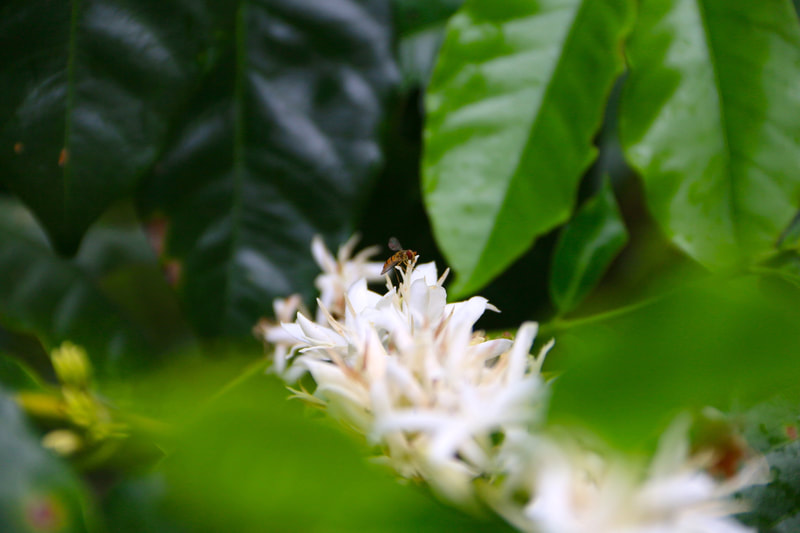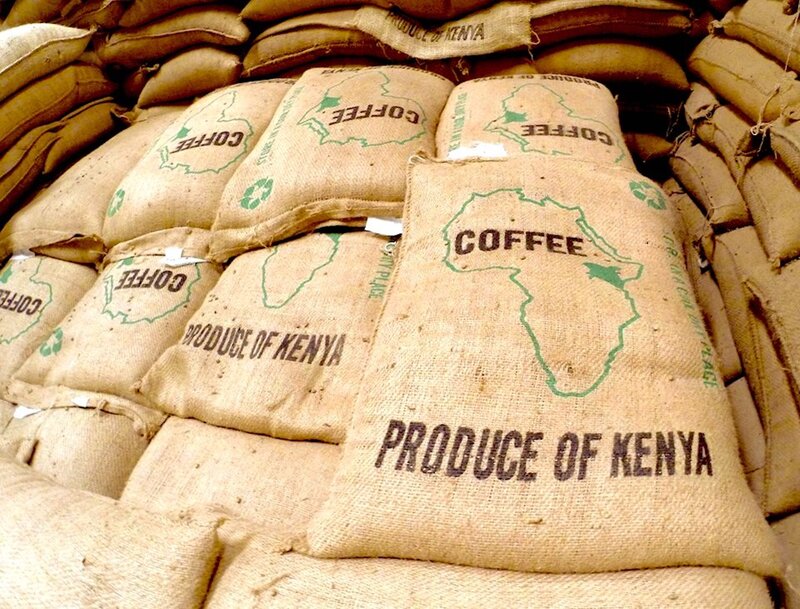KENYA kiandu AA
General Information
|
Origin: Kenya
County: Nyeri Cooperative: Mutheka Washing Station: Kiandu Farmers: 806 active members (242 female, 564 male) Cultivar: SL28 - SL34 - Ruiru 11 (Grafted with SL 28) Altitude: 1766 masl Process: Fully washed with double fermentation Harvest: November 2021 - January 2022 Cherry Price | FOB Price: 6.33 USD/kg | 10.21 USD/Kg Screen | Moisture | Density: 17-18 | 9.5% | 0.724 g/ml Packaging: 30 Kg with GrainPro Score: 87.8 Notes: Blueberries, brown sugar, red apple, strawberry |
TRACEABILITYThe Kiandu washing station is located in the central region of Kenya, more specifically in Nyeri County, located on the fertile slopes of Mount Kenya at an altitude of 1,766 meters above sea level.
Kiandu is part of the Mutheka FCS, which consists of nearly 5,643 active members. Each member on average owns about 225 coffee trees, and most farms also grow other crops such as corn, beans, and cassava. Farmers here mainly grow the SL28 and SL34 varieties, but as with almost all cooperatives in Kenya, they can be mixed with other cultivars such as Ruiru 11 and Batian; Although the latter are present in a very small proportion compared to the SL. In Kenya, when a factory processes coffees from many different smallholders, sorting the cherries is the most important step in ensuring cup quality and batch consistency. The cooperatives give these growers more control to selectively handpick and deliver only the ripest cherries to the factory, but additional cherries selection is also done at the factory before pulping. This lot was processed using the fully washed method, where a dry fermentation is carried out after pulping. Then, once the coffee is washed in concrete channels, it is soaked in clean water for 48 hours to ensure that no mucilage remains on the parchment, which is also known as double fermentation. IS 1 USD PER 1 Kg OF CHERRY POSSIBLE?Things are changing for the better in Kenya, the average price of coffee cherries has increased from USD 0.45 per kg of cherry in 2016/2017 to USD 0.80 per kg of cherry in the year 2020/2021, a 78% grow! But what has happened in the year 2021/2022?
According to information from the Nairobi Coffee Exchange (NCI), coffee production increased by 64% in the 2021/2022 harvest, compared to the previous year, and income increased by 90% in the same period. This is the result of a lower supply to the global market, because in Brazil, the harsh weather conditions caused up to 20% of the entire harvest to be lost in the last season. And in Ethiopia, the world's fifth largest producer, agricultural activities have been interrupted by the conflict between the government and the militia in the Tigray region. Various Cooperatives of Coffee Producers in Kenya have announced the highest payment rates in history, which in some cases of cooperatives in Nyeri reach USD 1.10 per kg of cherry. This has generated excitement in many coffee growers, increasing the average production per coffee tree from 0.9 kg to 3 kg, which is still low, if we compare it with Latin American origins. In the case of the cooperatives with which we are working this season, we have found that the best payment reaches USD 1.06 per kg of cherry in Kagumoini factory and the worst USD 0.82 per kg of cherry for the New Murarandia factory. Our goal of reaching 1 USD per 1 Kg of cherries is getting closer, and we hope that it will be a widespread achievement for the entire Kenyan industry and serve as an example for other origins in Africa and the world, where payments per Kg of cherries they are much lower than in Kenya. A particularly worrying case is that of Burundi, where only USD 0.16 is paid for 1 kg of cherries. WHY FARMERS ARE GRAFTING RUIRU 11 WITH SL 28?Grafting is a horticultural technique whereby plant tissues are joined together to continue growing together. The upper part of the combined plant is called the stem, while the lower part is called the rootstock.
The Ruiru 11 variety was released in 1985. The name of the variety has the prefix "Ruiru" which refers to the location of the Kenya Coffee Research Station where the variety was developed. The variety is not only resistant to CBD and CLR, but is also compact, allowing farmers to intensify production per unit of land. The cultivar SL 28 was selected at the former Scott Laboratories (now the National Agricultural Laboratories, NARL located in Kabete) on the basis of a single tree, of the drought resistant variety Tanganyika selected in northern Tanzania in 1931. The prefix SL in the strain name stands for Scott Laboratories where the strain was selected. The variety is suitable for medium to high altitude coffee growing areas. In an attempt to change "low organoleptic reputation" of Ruiru 11, farmers are grafting it with SL28. For the lower part, they use the root of SL 28 which is much longer than that of Ruiru, and it can absorve more nutrients from the fertile Kenyan volcanic soils. For the top part, they use Ruiru 11, which is more resistant to coffee diseases than SL. They do this to gain the best of both worlds, the cup quality of the SL, with the strength and productivity of the Ruiru 11. |
DOUBLE FERMENTATION PROCESS
Kiandu FACTORY LOCATION
|
WHERE WE ARE
Barcelona, Spain Santiago, Chile Budapest, Hungary |
